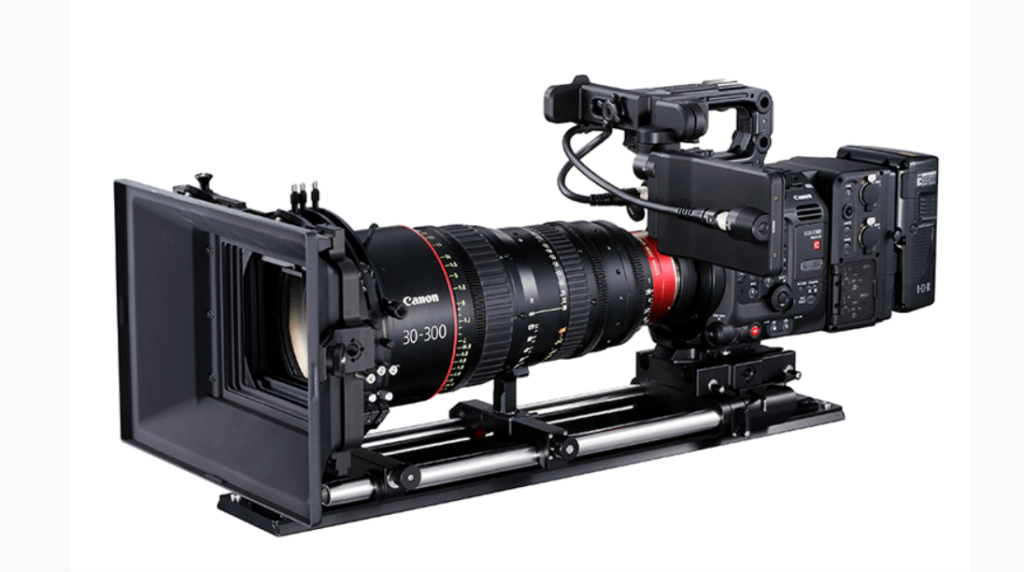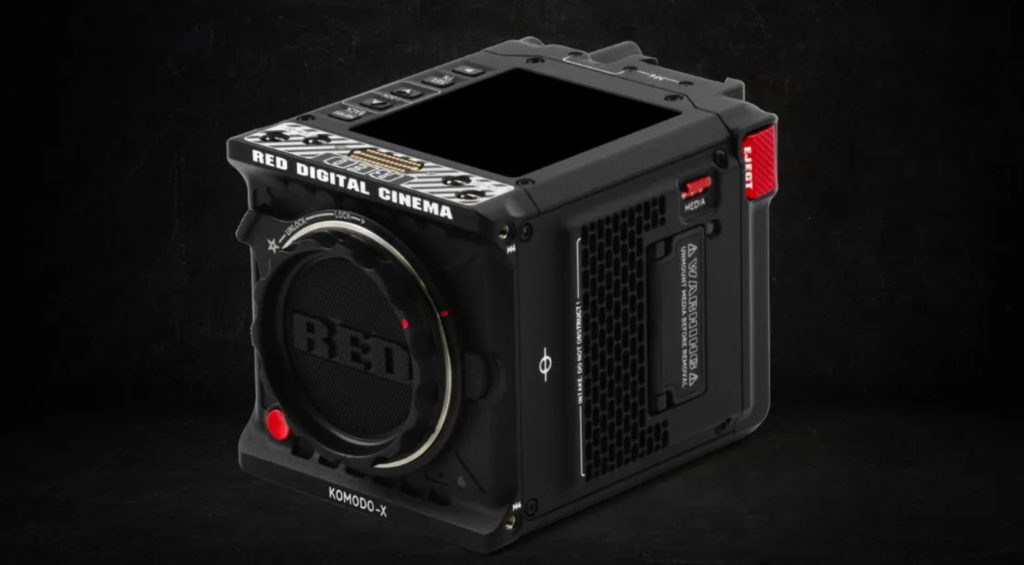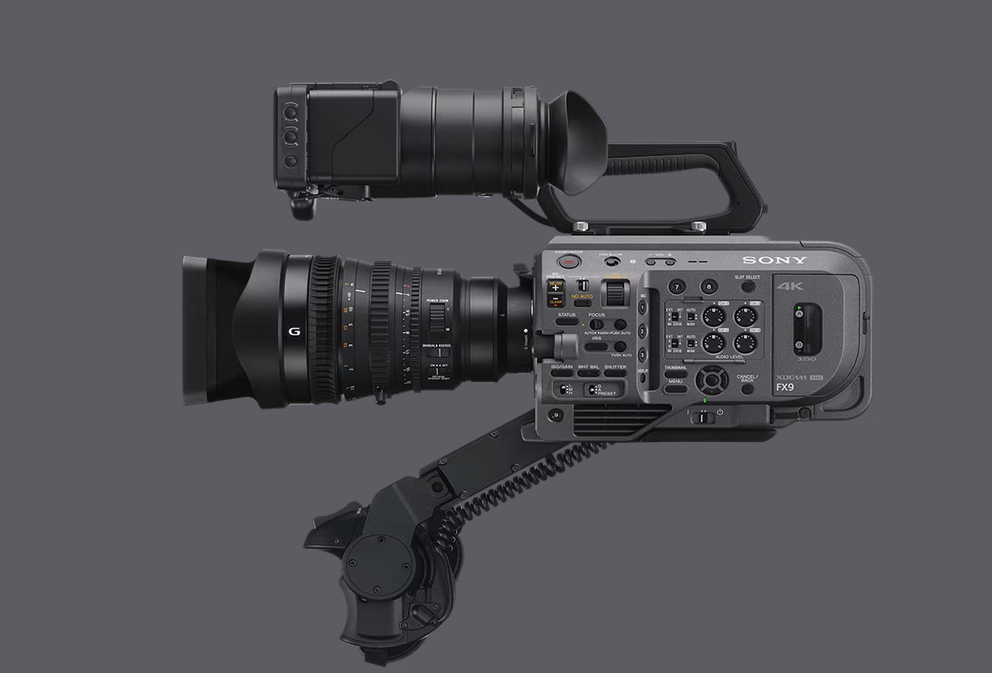Drawing from my own hands-on experience with various cameras, I can attest that the Sony FX9 has created quite a buzz among filmmakers, largely due to its outstanding capabilities. Yet, I’ve learned that no single cinema camera is a one-size-fits-all solution. From my time spent exploring and testing various models, I’ve come across several cinema cameras that can go toe-to-toe with the Sony FX9, or even surpass it in certain aspects. In this article, we will explore the top 3 Sony FX9 alternatives that are worth considering for anyone looking for a high-quality cinema camera that can deliver excellent results for their filmmaking needs.
1. Canon EOS C300 Mark III

If you are looking for a full-frame cinema camera that can rival the Sony FX9, you might want to consider the Canon EOS C300 Mark III as a good alternative.
- Sensor- Full frame or APSC: The Sony FX9 has a 6K full-frame Exmor R CMOS sensor that can capture 4K images with cinematic depth of field and low noise. The Canon C300 Mark III has a 4K Super 35mm Dual Gain Output (DGO) sensor that can deliver 16+ stops of dynamic range and high sensitivity. Both sensors have a dual base ISO of 800 and 4000, but the Sony FX9 can extend its range up to 102,400, while the Canon C300 Mark III can go up to 25600.
- Focus and Lens Mount: The Sony FX9 features a fast hybrid AF system that tracks subjects with speed, smoothness, and precision. It also has eye AF and real-time tracking functions that enhance the accuracy and reliability of the focus. The Canon C300 Mark III has a dual pixel CMOS AF system that provides fast and consistent focus performance. It also has face detection and tracking functions that can recognize and follow subjects in various situations. Both cameras have a user-changeable lens mount that can accommodate different types of lenses. The Sony FX9 has an E-mount that can be swapped to a PL mount, while the Canon C300 Mark III has an EF mount that can be changed to a PL or B4 mount.
- Design- Dimension and Weight Comparison: The Sony FX9 has a modular and ergonomic design that allows for flexible shooting scenarios and camera support. It has a built-in electronic variable ND filter that can adjust the exposure in variable lighting conditions. It also has a 12G-SDI output that can send 4K signals via a single cable. The Canon C300 Mark III has a compact and lightweight design that makes it easy to handle and operate. It has a built-in mechanical ND filter that can reduce the light by up to 10 stops. It also has a 12G-SDI output that can output 4K signals. The Sony FX9 measures 146 x 142.5 x 229 mm and weighs 2 kg (body only), while the Canon C300 Mark III measures 133 x 179 x 151 mm and weighs 1.77 kg (body only).
- Monitor: The Sony FX9 comes with a 3.5-inch LCD monitor that can be attached to the camera body or the smart grip. It has a resolution of 2.76 million dots and a touch screen function. The Canon C300 Mark III comes with a 4.3-inch LCD monitor that can be mounted on the camera body or the extension unit. It has a resolution of 2.76 million dots and a touch screen function. Both monitors can be rotated and tilted for different viewing angles.
- Battery: The Sony FX9 uses the BP-U series batteries that can provide up to 110 minutes of continuous recording time. The Canon C300 Mark III uses the BP-A series batteries that can provide up to 130 minutes of continuous recording time. Both cameras have dual battery slots that can support hot swapping and extended shooting.
- Video Capabilities & Audio Inputs: The Sony FX9 can record 4K DCI and UHD up to 60p, and 2K and HD up to 180p in XAVC-I 10-bit 4:2:2 codec. It can also output 16-bit raw up to 120p via the XDCA-FX9 extension unit and an external recorder. The Canon C300 Mark III can record 4K DCI and UHD up to 120p, and 2K and HD up to 180p in Cinema RAW Light or XF-AVC 10-bit 4:2:2 codec. It can also output 12-bit raw up to 60p via the SDI port and an external recorder. The Sony FX9 has four audio inputs: two XLR inputs on the handle, one XLR input on the extension unit, and one 3.5mm stereo mini jack on the body. The Canon C300 Mark III has two audio inputs: one XLR input on the handle and one 3.5mm stereo mini jack on the body.
- Price (USD): The Sony FX9 costs $9,999 for the body only, and $13,499 for the kit with the 28-135mm f/4 G OSS lens. The Canon C300 Mark III costs $10,999 for the body only, and $14,999 for the kit with the 18-80mm T4.4 L IS lens.
2. Red Digital Cinema KOMODO

If you are looking for a compact and lightweight cinema camera that can rival the Sony FX9, you might want to consider the Red Digital Cinema KOMODO as a good alternative
- Sensor- Full frame or APSC The Sony FX9 has a 6K full-frame Exmor R CMOS sensor that can capture 4K images with cinematic depth of field and low noise. The Red KOMODO has a 6K full-frame CMOS sensor that uses Red’s Exmor R technology for improved sensitivity and reduced noise. Both sensors have a dual base ISO of 800 and 4000, but the Sony FX9 can extend its range up to 102,400, while the Red KOMODO can go up to 25600.
- Focus and Lens Mount The Sony FX9 features a fast hybrid AF system that tracks subjects with speed, smoothness, and precision. It also has eye AF and real-time tracking functions that enhance the accuracy and reliability of the focus. The Red KOMODO has a contrast and phase detect AF system that provides fast and consistent focus performance. It also has face detection and tracking functions that can recognize and follow subjects in various situations. Both cameras have a user-changeable lens mount that can accommodate different types of lenses. The Sony FX9 has an E-mount that can be swapped to a PL mount, while the Red KOMODO has an RF mount that can accept Canon RF mount-based lens adapters.
- Design- Dimension and Weight Comparison The Sony FX9 has a modular and ergonomic design that allows for flexible shooting scenarios and camera support. It has a built-in electronic variable ND filter that can adjust the exposure in variable lighting conditions. It also has a 12G-SDI output that can send 4K signals via a single cable. The Red KOMODO has a compact and lightweight design that makes it easy to handle and operate. It has a built-in mechanical ND filter that can reduce the light by up to 10 stops. It also has a 12G-SDI output that can output 4K signals. The Sony FX9 measures 146 x 142.5 x 229 mm and weighs 2 kg (body only), while the Red KOMODO measures 101 x 101 x 74 mm and weighs 1.04 kg (body only).
- Monitor The Sony FX9 comes with a 3.5-inch LCD monitor that can be attached to the camera body or the smart grip. It has a resolution of 2.76 million dots and a touch screen function. The Red KOMODO comes with a 2.9-inch LCD monitor that can be mounted on the camera body or the extension unit. It has a resolution of 2.76 million dots and a touch screen function. Both monitors can be rotated and tilted for different viewing angles.
- Battery The Sony FX9 uses the BP-U series batteries that can provide up to 110 minutes of continuous recording time. The Red KOMODO uses the BP-A series batteries that can provide up to 130 minutes of continuous recording time. Both cameras have dual battery slots that can support hot swapping and extended shooting.
- Video Capabilities & Audio Inputs The Sony FX9 can record 4K DCI and UHD up to 60p, and 2K and HD up to 180p in XAVC-I 10-bit 4:2:2 codec. It can also output 16-bit raw up to 120p via the XDCA-FX9 extension unit and an external recorder. The Red KOMODO can record 6K DCI and UHD up to 50p, and 4K and 2K up to 120p in Redcode RAW or ProRes 422 codec. It can also output 12-bit raw up to 60p via the SDI port and an external recorder. The Sony FX9 has four audio inputs: two XLR inputs on the handle, one XLR input on the extension unit, and one 3.5mm stereo mini jack on the body. The Red KOMODO has two audio inputs: one integrated dual channel digital mono microphone and one 3.5mm stereo mini jack on the body.
- Price (USD) The Sony FX9 costs $9,999 for the body only, and $13,499 for the kit with the 28-135mm f/4 G OSS lens. The Red KOMODO costs $5,995 for the body only, and $7,200 for the kit with the 45-135mm T2.8 lens.
3. Sony FX6

If you are looking for a more compact and affordable cinema camera that can rival the Sony FX9, you might want to consider the Sony FX6 as a good alternative.
- Sensor- Full frame or APSC The Sony FX9 and the Sony FX6 both have a 6K full-frame Exmor R CMOS sensor that can capture 4K images with cinematic depth of field and low noise. Both sensors have a dual base ISO of 800 and 4000, but the Sony FX9 can extend its range up to 102,400, while the Sony FX6 can go up to 25600.
- Focus and Lens Mount The Sony FX9 features a fast hybrid AF system that tracks subjects with speed, smoothness, and precision. It also has eye AF and real-time tracking functions that enhance the accuracy and reliability of the focus. The Sony FX6 has a contrast and phase detect AF system that provides fast and consistent focus performance. It also has face detection and tracking functions that can recognize and follow subjects in various situations. Both cameras have a user-changeable lens mount that can accommodate different types of lenses. The Sony FX9 has an E-mount that can be swapped to a PL mount, while the Sony FX6 has an E-mount that can accept Sony E-mount lenses.
- Design- Dimension and Weight Comparison The Sony FX9 has a modular and ergonomic design that allows for flexible shooting scenarios and camera support. It has a built-in electronic variable ND filter that can adjust the exposure in variable lighting conditions. It also has a 12G-SDI output that can send 4K signals via a single cable. The Sony FX6 has a compact and lightweight design that makes it easy to handle and operate. It has a built-in mechanical ND filter that can reduce the light by up to 10 stops. It also has a 12G-SDI output that can output 4K signals. The Sony FX9 measures 146 x 142.5 x 229 mm and weighs 2 kg (body only), while the Sony FX6 measures 116 x 153 x 114 mm and weighs 0.89 kg (body only).
- Monitor The Sony FX9 comes with a 3.5-inch LCD monitor that can be attached to the camera body or the smart grip. It has a resolution of 2.76 million dots and a touch screen function. The Sony FX6 comes with a 3.5-inch LCD monitor that can be mounted on the camera body or the extension unit. It has a resolution of 2.76 million dots and a touch screen function. Both monitors can be rotated and tilted for different viewing angles.
- Battery The Sony FX9 uses the BP-U series batteries that can provide up to 110 minutes of continuous recording time. The Sony FX6 uses the BP-U series batteries that can provide up to 130 minutes of continuous recording time. Both cameras have dual battery slots that can support hot swapping and extended shooting.
- Video Capabilities & Audio Inputs The Sony FX9 can record 4K DCI and UHD up to 60p, and 2K and HD up to 180p in XAVC-I 10-bit 4:2:2 codec. It can also output 16-bit raw up to 120p via the XDCA-FX9 extension unit and an external recorder. The Sony FX6 can record 4K DCI and UHD up to 120p, and 2K and HD up to 240p in XAVC-I 10-bit 4:2:2 codec. It can also output 16-bit raw up to 60p via the SDI port and an external recorder. Both cameras support HLG, S-Log3, and user 3D LUTs for HDR workflows. The Sony FX9 has four audio inputs: two XLR inputs on the handle, one XLR input on the extension unit, and one 3.5mm stereo mini jack on the body. The Sony FX6 has two audio inputs: one XLR input on the handle and one 3.5mm stereo mini jack on the body.
- Price (USD) The Sony FX9 costs $9,999 for the body only, and $13,499 for the kit with the 28-135mm f/4 G OSS lens. The Sony FX6 costs $5,999 for the body only, and $7,199 for the kit with the 24-105mm f/4 G OSS lens.





